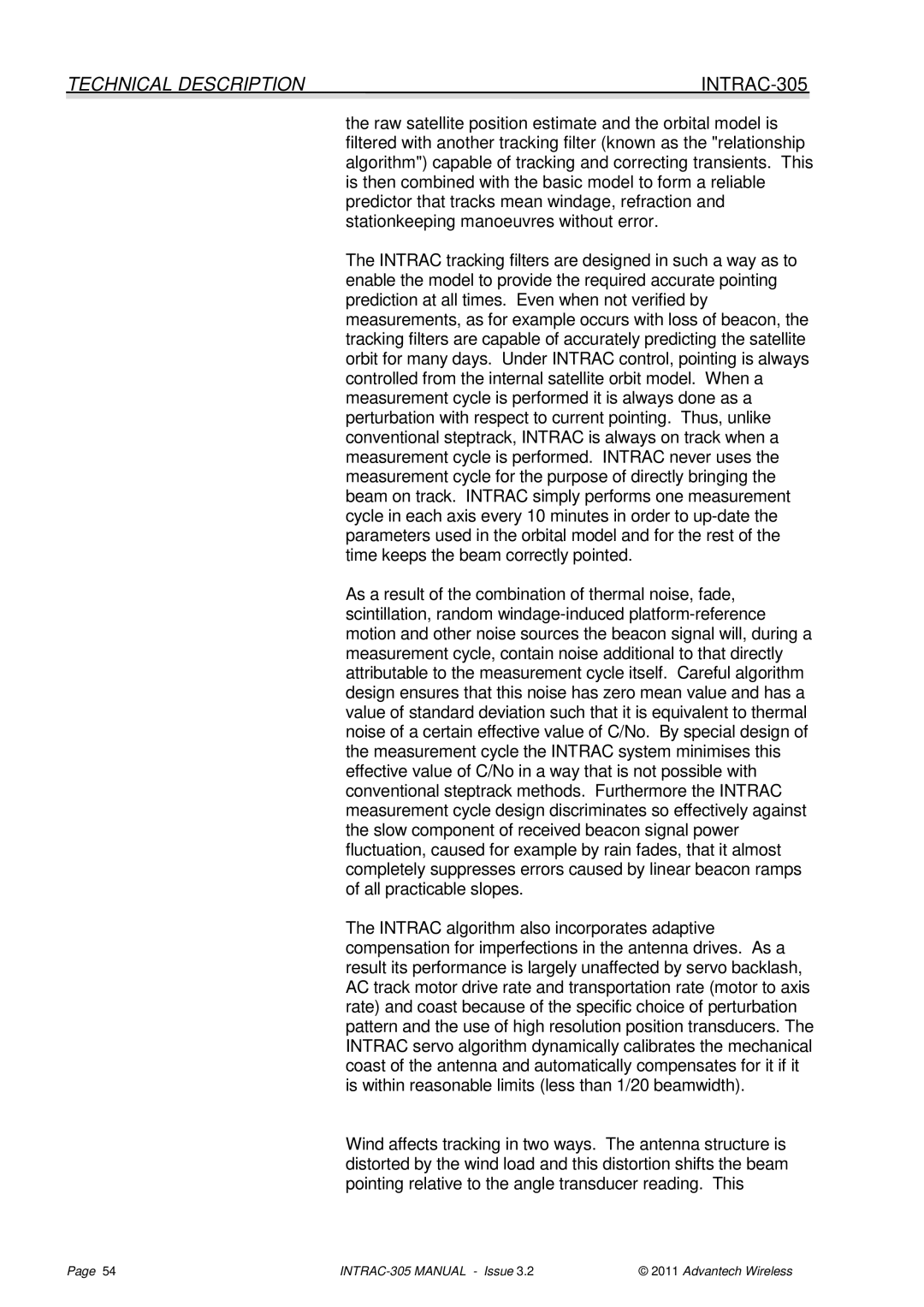TECHNICAL DESCRIPTION |
|
the raw satellite position estimate and the orbital model is filtered with another tracking filter (known as the "relationship algorithm") capable of tracking and correcting transients. This is then combined with the basic model to form a reliable predictor that tracks mean windage, refraction and stationkeeping manoeuvres without error.
The INTRAC tracking filters are designed in such a way as to enable the model to provide the required accurate pointing prediction at all times. Even when not verified by measurements, as for example occurs with loss of beacon, the tracking filters are capable of accurately predicting the satellite orbit for many days. Under INTRAC control, pointing is always controlled from the internal satellite orbit model. When a measurement cycle is performed it is always done as a perturbation with respect to current pointing. Thus, unlike conventional steptrack, INTRAC is always on track when a measurement cycle is performed. INTRAC never uses the measurement cycle for the purpose of directly bringing the beam on track. INTRAC simply performs one measurement cycle in each axis every 10 minutes in order to
As a result of the combination of thermal noise, fade, scintillation, random
The INTRAC algorithm also incorporates adaptive compensation for imperfections in the antenna drives. As a result its performance is largely unaffected by servo backlash, AC track motor drive rate and transportation rate (motor to axis rate) and coast because of the specific choice of perturbation pattern and the use of high resolution position transducers. The INTRAC servo algorithm dynamically calibrates the mechanical coast of the antenna and automatically compensates for it if it is within reasonable limits (less than 1/20 beamwidth).
Wind affects tracking in two ways. The antenna structure is distorted by the wind load and this distortion shifts the beam pointing relative to the angle transducer reading. This
Page 54 | © 2011 Advantech Wireless |
